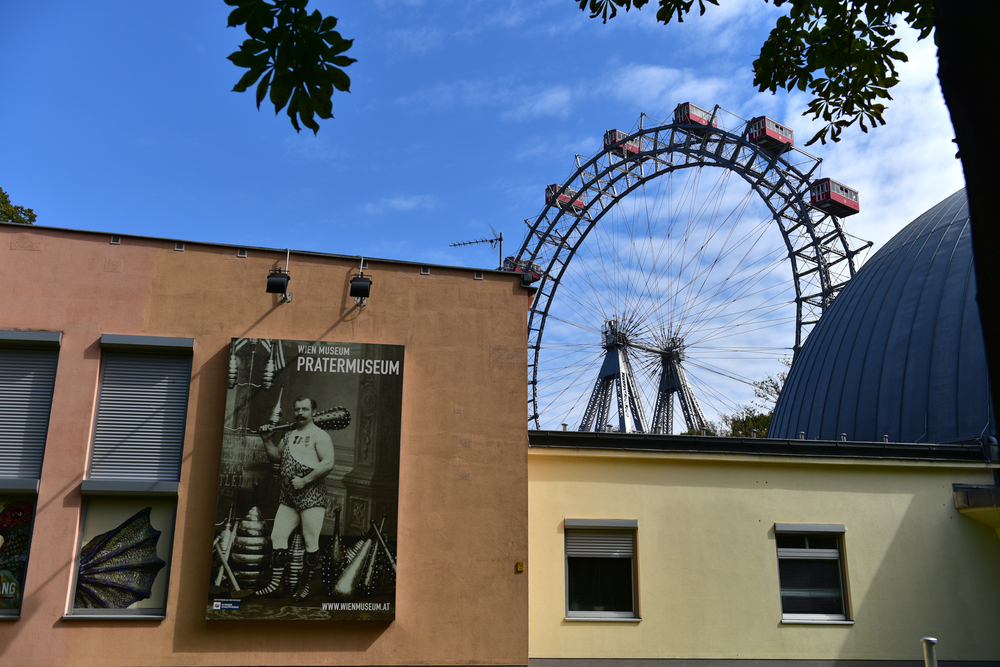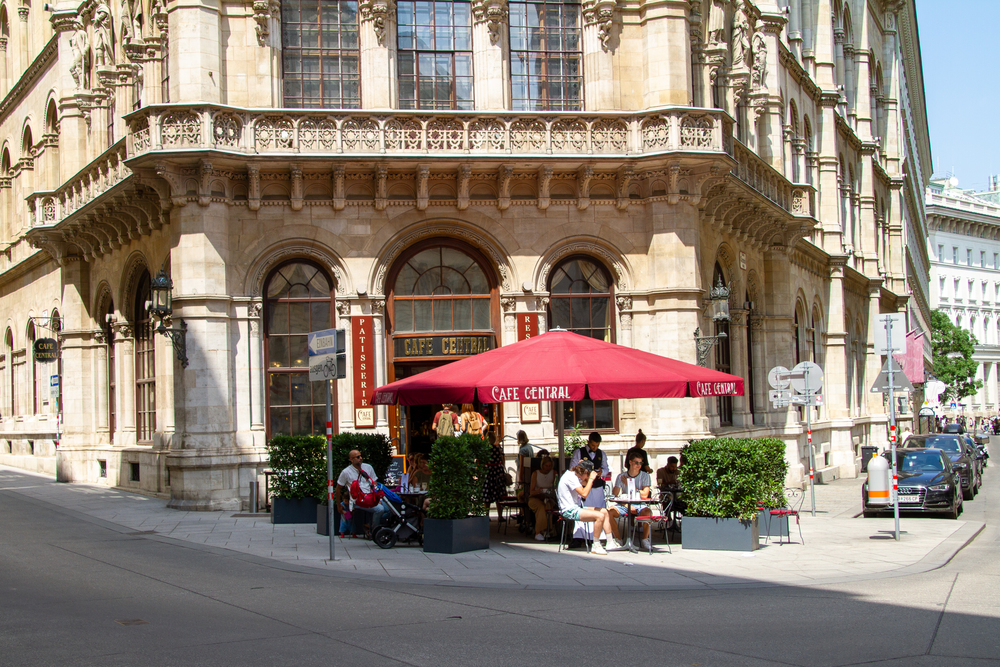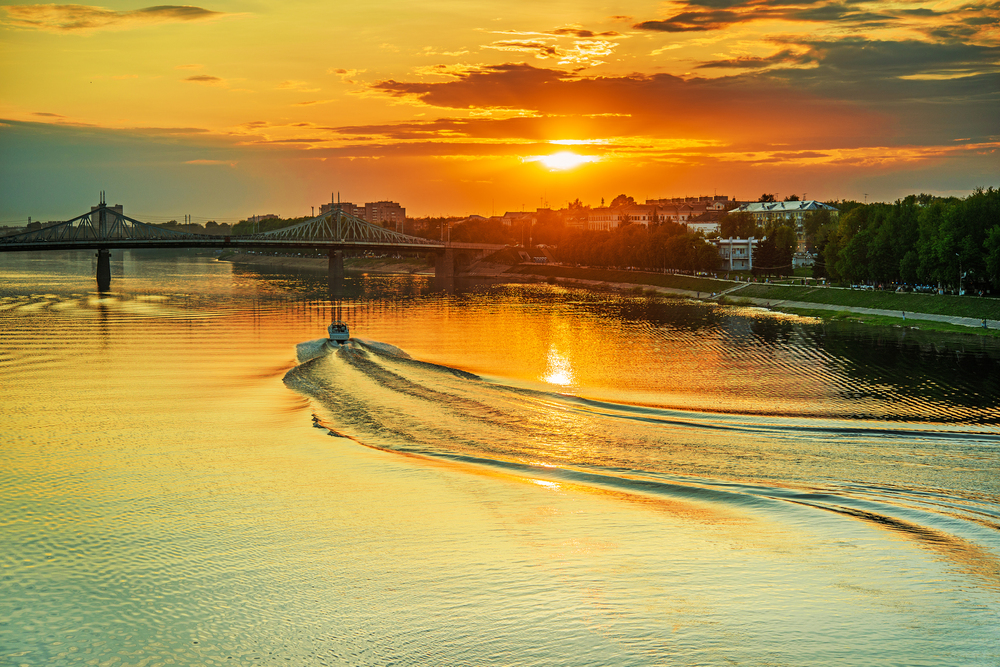Central Europe boasts two of the world’s great capital cities — Vienna and Prague — that regularly top travelers’ bucket lists. Just a few hours’ journey from each other, offer quite contrasting experiences for visitors.
Both possess stunning architecture, rich cultures, and deep historical significance, and each still maintains its character and atmosphere. What follows is a rundown of 20 key differences between these two Central European gems.
Architectural Landscape

Vienna showcases grand imperial palaces and wide boulevards designed to impress with their scale and ornate Baroque and Art Nouveau styles. The Ringstrasse exemplifies this planned magnificence with its sweeping curve of imposing buildings.
Prague, meanwhile, presents a more medieval core with narrow winding streets, Gothic spires, and an enchanting mix of Romanesque, Gothic, Renaissance, and Baroque buildings packed into a compact area — it feels like stepping into a fairy tale.
City Layout and Navigation

Vienna sprawls considerably more than Prague, with its major attractions scattered across different districts connected by an excellent public transit system. The city follows a semi-logical layout with numbered districts spiraling out from the central first district.
Prague concentrates most of its main sights within walking distance of each other, with the charming Old Town, Lesser Quarter, and Castle District all linked by the iconic Charles Bridge. This compact arrangement makes Prague easier to explore on foot.
Like Travel Pug’s content? Follow us on MSN.
Language Accessibility

English proficiency runs higher in Vienna, particularly in tourist areas and among younger Austrians, making communication generally smoother for English-speaking visitors. German phrases certainly help, but aren’t strictly necessary in most situations.
Prague has improved dramatically in this regard over recent years. However, English fluency remains somewhat less universal, especially among older residents and in less touristy neighborhoods where knowing a few Czech phrases proves more useful.
Culinary Traditions

Vienna’s food scene centers around elegant café culture, refined pastries like Sachertorte, and hearty classics such as Wiener Schnitzel and Tafelspitz. The dining experience often feels formal with proper table service, even in casual establishments.
Prague offers heartier fare featuring abundant meat dishes, dumplings, and rich sauces, with a more casual approach to dining. Czech beer culture significantly shapes the food landscape, with many dishes designed specifically to accompany the country’s world-renowned brews.
Coffee Culture

Vienna’s historic coffeehouses are cultural institutions where patrons linger for hours over a single Melange (similar to cappuccino) while reading newspapers provided on wooden holders. These elegant establishments often feature marble tabletops, plush seating, and sometimes live piano music.
Prague’s café scene, while charming, lacks the same historical continuity and formality, offering a more contemporary vibe with an increasing focus on specialty coffee in modern settings rather than preserving centuries-old traditions.
Like Travel Pug’s content? Follow us on MSN.
Price Points

Prague remains noticeably more affordable in almost every category — from accommodation and transportation to meals and entertainment. Visitors can enjoy quality experiences at prices significantly lower than in Western European capitals.
Vienna’s costs align more closely with other Western European destinations, with higher price tags particularly evident in restaurants, hotels, and cultural attractions. Budget travelers find their money stretches considerably further in the Czech capital.
Musical Heritage

Vienna stands unrivaled as the classical music capital of the world, where Mozart, Beethoven, Schubert, Strauss, and countless other composers lived and worked. The city maintains this legacy through world-class venues like the Musikverein and State Opera House, offering nightly performances of impeccable quality.
Prague boasts its rich musical history with composers like Dvořák and Smetana. Still, it offers a slightly less formal approach with chamber concerts held in beautiful churches and historic halls alongside the impressive State Opera.
River Experience

The Danube flows somewhat removed from Vienna’s historical center, playing a less central role in the tourism experience despite river cruises and the recreational Danube Island. Prague’s Vltava River cuts right through the heart of the historic districts, with the iconic Charles Bridge providing spectacular views of Prague Castle and creating some of the city’s most unforgettable vistas.
The river feels integral to Prague’s identity and visitor experience in a way Vienna’s relationship with the Danube does not.
Like Travel Pug’s content? Follow us on MSN.
Castle Comparisons

Prague Castle dominates the city skyline as the largest ancient castle complex in the world. Sprawling across a hilltop, St. Vitus Cathedral’s spires are visible from nearly everywhere. The castle feels like an entire neighborhood, with diverse architectural styles spanning centuries.
Vienna’s Hofburg Palace spreads horizontally rather than vertically in the city center, lacking Prague Castle’s dramatic hillside positioning but compensating with lavish imperial apartments and multiple museums within its complex.
Public Transportation

Vienna boasts one of Europe’s most efficient, clean, and comprehensive public transportation networks, with a straightforward ticket system and frequent service even late at night. The city’s transit system feels like a model of German-speaking precision.
Prague’s system, while still effective and affordable, presents slightly more navigation challenges for newcomers with fewer English announcements and less intuitive connections. However, the beautiful vintage trams add charm that Vienna’s more modern vehicles lack.
Green Spaces

Vienna incorporates generous parks and gardens throughout the city, from the central Stadtpark to the vast Prater and the imperial Schönbrunn gardens. These well-maintained green spaces provide peaceful retreats from urban life and are prominently featured in Viennese daily routines.
Prague offers fewer and typically smaller green spaces within its historic center, with the most major parks like Letná or Petřín Hill located just outside the densest tourist zones.
Like Travel Pug’s content? Follow us on MSN.
Nightlife Energy

Prague pulses with a more vibrant, youthful nightlife scene spanning from beer halls to modern clubs, with later closing times and a generally more permissive atmosphere. The city has become a popular destination for younger travelers and bachelor parties seeking affordable revelry.
Vienna presents a more restrained evening atmosphere focused on classical performances, wine gardens, and sophisticated bars rather than raucous celebrations, generally attracting an older, more culturally oriented visitor.
Day Trip Opportunities

Vienna serves as an excellent hub for diverse day trips ranging from the Wachau Valley’s wineries to Bratislava (Slovakia’s capital), just an hour away, or even Budapest with high-speed rail connections. The surrounding Lower Austria region offers castles, abbeys, and charming villages easily accessible by efficient regional trains.
Prague’s day trips stay within Czech borders, offering fairytale towns like Český Krumlov, Kutná Hora, and Karlštejn, each revealing different aspects of Bohemian history and charm.
Political History Echoes

Vienna’s imperial Habsburg legacy dominates its historical narrative, with less visible evidence of its Cold War division and relatively seamless transition to modern democracy. The city projects a sense of continuous connection to its imperial past through preserved palaces and traditions.
Prague bears more apparent marks of 20th-century political turmoil, from Nazi occupation to Soviet influence, with memorials to the Velvet Revolution and Communist-era architecture creating a more layered historical experience that feels less curated than Vienna’s imperial focus.
Like Travel Pug’s content? Follow us on MSN.
Local Attitudes

Viennese locals maintain formal politeness that sometimes reads as reservedness to visitors, with social interactions following more structured patterns and expectations. Service often comes with precise correctness rather than outgoing warmth.
Praguers might initially appear similarly reserved but typically warm up more quickly in casual settings, especially outside the most tourist-heavy areas where visitor fatigue can affect interactions. The Czech sense of humor tends toward the ironic and self-deprecating in contrast to Austrian formality.
Shopping Experiences

Vienna excels in luxury shopping and specialized boutiques, particularly for design items, fashion, and high-end souvenirs. The Graben and Kärntner Strasse offer prestigious international brands alongside historic Viennese establishments.
Prague’s shopping scene emphasizes Bohemian crystal, wooden toys, and artisanal products at more accessible price points, with a greater contrast between touristy souvenir shops in the Old Town and authentic local businesses in residential neighborhoods.
Beer vs. Wine Culture

Prague celebrates beer as a national treasure with centuries of brewing tradition, offering exceptional quality pilsners at prices that seem impossibly low to visitors from Western countries. Traditional beer halls serve as community gathering places central to Czech social life.
Vienna embraces wine culture more prominently, particularly with its Heurigen (wine taverns) in districts like Grinzing and Nussdorf, where locals enjoy young wines from vineyards within the city limits – a tradition that feels distinctly Viennese.
Like Travel Pug’s content? Follow us on MSN.
Street Experience

Prague’s cobblestone streets and narrow passages create a more pedestrian-oriented historic environment that sometimes feels like wandering through a medieval movie set, complete with unexpected courtyards and passages. The city rewards aimless wandering with constant discoveries.
Vienna’s wider streets and more orderly layout reflect imperial urban planning, with impressive vistas and grand perspectives rather than intimate discoveries, creating a more predictable but no less beautiful urban experience.
Contemporary Art Scene

Vienna has invested heavily in contemporary arts, with institutions like the MuseumsQuartier complex establishing the city as a forward-thinking cultural center alongside its classical heritage. The art scene feels well-funded and integrated into the city’s identity.
Prague’s contemporary art scene feels more grassroots and emergent, with smaller galleries and art spaces repurposing unusual venues, creating an exciting, if sometimes less accessible, environment for experiencing current Czech creative expression outside the historical attractions.
Seasonal Variations

Vienna truly shines during winter, when Christmas markets transform the city into a festive wonderland, and the gala season brings elegant dancers to palaces and public buildings throughout January and February. Summer can actually be quieter as Viennese residents depart for vacation.
Prague presents the opposite pattern, with summer bringing vibrant life to outdoor spaces, riverside activities, and beer gardens. At the same time, winter feels more subdued despite beautiful Christmas markets that have grown increasingly commercial.
Like Travel Pug’s content? Follow us on MSN.
Beyond the Surface

These Central European capitals represent fundamentally divergent historical trajectories despite their geographical proximity. Vienna proceeds with the confident elegance of a city that formerly ruled over an empire, its grandeur deliberately maintained as part of its identity.
Prague reveals its complexities more gradually, with epochs of history sometimes tangled in a city that has endured occupation and political transformation while clutching its distinctive character.
Both cities reward exploration with experiences outside of the usual, whether you prefer the imperial grandeur of Vienna or the more restrained medieval charm of Prague. Understanding such differences enables visitors to enjoy each city on its own terms and not in relation to the other—though the contrast makes visiting both a revealing European experience.
More from Travel Pug

- Cities Growing so Fast You Won’t Recognize Them in 10 Years
- 13 Destinations Where Tourists Regularly Regret Their Trip
- 20 Obscure WWII Sites Even History Buffs Don’t Know About
- 10 Under-the-Radar Mountain Towns That Are Both Affordable and Beautiful
- Remote Villages in Europe Where You Can Live for Free in Exchange for Work
Like Travel Pug’s content? Follow us on MSN.
